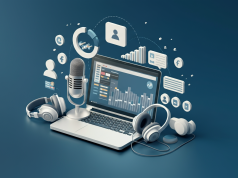The structure to any successful marketing strategy and one of the best methods for generating leads and converting them into lifelong customers is the inbound marketing funnel. But what does this idea actually mean and how can your business develop and execute a good one?
This blog goes deep into inbound marketing funnel stages, explaining every stage of the funnel in detail and giving actionable tips to populate your funnel with results. Whether you’re new to inbound marketing, or looking to get more out of your website, this guide will be the fitness instructor that changes your routine for the better.
What is an Inbound Marketing Funnel?
The inbound marketing funnel concept is a process these businesses use to drive customers to purchase a particular solution: in this case, products and services directed at a customer base of potential buyers. Unlike the traditional marketing funnels, which are outbound (cold calls, ads), the inbound focus is on organically attracting people with great, useful content.
It’s simply a way to illustrate that customers progress through 3 primary stages before they buy (and we hope, become loyal advocates). These stages are:
- Top of the Funnel (TOFU): The Awareness Stage
- Middle of the Funnel (MOFU): Consideration at the middle stage of the funnel, people are already aware of your brand.
- BOFU: Decision (AKA The Bottom of the Funnel)
Every stage of the inbound marketing funnel must be approached with a distinctive kind of interaction, reinforced by specific content and messaging.
But why should this method be so effective? The magic is the way it zeros in on developing those meaningful conversations that foster relationships, opposed to simply focusing on selling.
Why the Inbound Marketing Funnel is So Effective
The contemporary consumer doesn’t want to be bombarded by an invasive ad or cold selling script. Rather, they seek value at every interaction point. The inbound marketing funnel is successful because it engages with potential buyers on their time and their terms, with information rather than flashy interruptions.
Here’s why it’s effective:
- Customer-Focused: It is about solving a customer problem, not just selling a product.
- Organic Growth: Provide value, get leads without spending a fortune on ads.
- Scalable: A good funnel design will grow with your business – it should be pliable and responsive to new market demands.
- Measurable: All stages of the inbound marketing funnel have measurable outcomes to track for performance improvement.
Now that you know what an inbound marketing funnel is and how it works, let’s discuss how to create one.
The 3 Phases of the Inbound Marketing Funnel (And How to Execute Them)
Stage 1: Awareness (Top of the Funnel – TOFU)
The first stage of your inbound marketing funnel is all about being seen. People, who may become your future customers, are only beginning to know the problem or seek information on a related topic. Right now, they’re not buying. It is your job to bring them in with entertaining, informative material.
Goals:
- You want to get the most leads you can from somewhere appropriate to get your leads.
- Build brand awareness.
- First, you should be seen as a helpful resource.
Strategies:
- Content Marketing: You either write blogs, make videos or create infographics to speak to your industry’s common problems. If you are selling email marketing software you could write a blog post “5 Email Marketing Hacks for Small Businesses”.
- SEO Optimization: Make sure that your content is raking for similar keywords including, “email marketing tips” or “how to grow email list”.
- Social Media Update: Share posts that inform or motivate your audience, including brief video tips and beneficial data.
- Free Download (Guides and Tools): You can give out free guides or tools in exchange for email to nurture in the future.
Example Tactics:
- Write a whitepaper called “The Beginner’s Guide to the Inbound Marketing Funnel.”
- Produce a YouTube video that describes what inbound marketing is and how it differs from advertising.
Pro Tip: Add compelling calls to action (CTAs) such as “Download Now” or “Learn More” to begin collecting the contact information of your leads.
Stage 2: Consideration (Middle of the Funnel – MOFU)
Now that you’ve piqued your prospect’s interest, you need to gain their trust. This is when someone is considering the alternatives and trying to find a solution. Your mission is to demonstrate to them why your product or service is right for them and build their trust in your brand.
This stage of your inbound marketing funnel is where positioning and credibility matter most.
Goals:
- Guide leads further down the pipeline with customized content.
- Somehow, show people what you know and why you’re good at what you do.
- Lead them to consider your product as the solution.
Strategies:
- Webinars and Seminars: Conduct a deep-dive session on best practices or success stories with your product.
- Case studies: Showcase actual instances where your customers got success with your services.
- Email Nurture Campaigns: Sharing educational material in your emails helps maintain the audience’s interest, e.g., blog links, product explainer videos.
- Comparison Guides: Create guides comparing your product to those of your competitors in a way that’s open and honest.
Example Tactics:
- Email with the subject line “5 Reasons [Your Product] Helps Solve [Pain Point].”
- Can you share a real life customer success story where they were able to able to achieve a significant ROI by using your platform?
Pro Tip: Aim to provide value, not to pitch a sale. At this point, your audience is desperate for information, not a hard sell.
Stage 3: The Decision Stage (Bottom of the Funnel – BOFU)
This final stage in the inbound marketing funnel is where you seal the deal. Bottom-of-the-funnel leads are ready to make a decision. Your role is to alleviate the final doubts and make the leap to a customer as frictionless.
Goals:
- Encourage conversions.
- Showcase proof of value.
- Gain trust that they have made the right decision to choose you.
Strategies:
- Free Samples or Trials: Give your customers a chance to try your product with little commitment.
- Deals/ Offers: You are tempted to take an action when you are given an offer.
- Testimonials/Reviews: Leverage great feedback from current customers to sound more credible.
- Chat Support or Chatbot: Implement chat support or a chatbot to answer any last questions before the purchase.
Example Tactics:
- Provide a free trial without requiring a credit card.
- Email testimonials among satisfied customers such as “Check out how [Customer Name] increased [Metric] with us!”
Pro Tip: Choose an urgency (eg “Offer ends in 3 days!”) to create momentum, but be careful not to sound salesy.
Maximizing Your Inbound Marketing Funnel
Creating an inbound marketing funnel is more than just setting it up. Your funnel needs to evolve with the needs and wants of your audience. And here are a few remaining tips to maintain its optimal performance:
- Analyze the Data: Use Google Analytics or HubSpot to track performance at each point in the funnel.
- Keep polishing the Content: Daily content update in the form of blogs, videos, offers, offers based on trending industry.
- Act on Feedback: Discuss with your leads and customers about their interactions with your funnel.
Final Thoughts: Create Your Inbound Marketing Funnel Today
A clog-free inbound marketing funnel doesn’t materialize overnight. It takes a careful plan, constant optimization, and most importantly, meeting your customers where they are when they are considering a purchase.
If you want generate a high-converting inbound marketing funnel for your business, now it’s the time to start. Begin with a few pieces of great content for the awareness stage and then move through each phase.
For other expert advice, resources and template to help you develop your inbound marketing funnel strategy, check out our resources or contact our team today!
👉 Also, don’t miss our in-depth guide on How to Improve Your Inbound Marketing Strategy for Better Results to refine your overall approach and drive even better outcomes.




